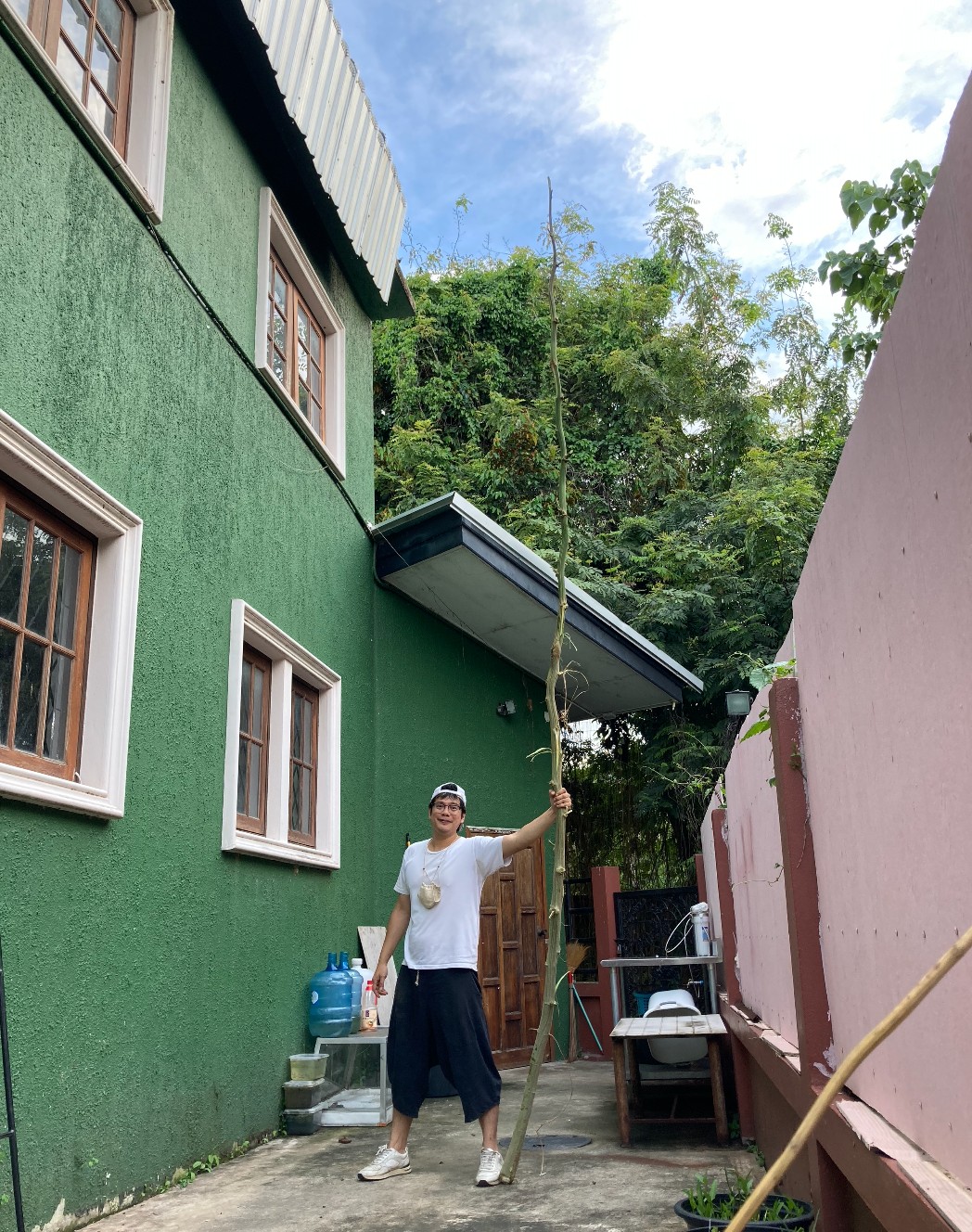
As the global demand for sustainable construction grows, Hempcrete is emerging as a building material that not only reduces environmental impact but also enhances the quality of life. Derived from the hemp plant, Hempcrete is a natural and breathable material that offers numerous benefits over traditional building materials like concrete. With Thailand’s recent legalization of cannabis, the time is right to explore the potential of hemp in construction. Our housing workshop project in Krabi, Thailand, will introduce the use of Hempcrete, combined with bamboo, to create prefabricated homes that are not only sustainable but also healthier for occupants.
Why Hempcrete Benefits Humanity?
A Natural, Sustainable Solution
Hemp plants absorb CO2 during their growth, Hempcrete is made by mixing the woody core of the hemp plant with lime and water, creating a lightweight yet durable material that sequesters carbon as it sets. The hemp plant itself is a fast-growing, renewable resource that requires little water and no pesticides, making Hempcrete one of the most environmentally friendly building materials available. In contrast to conventional concrete, which is resource-intensive and contributes to greenhouse gas emissions, Hempcrete helps reduce the carbon footprint of construction projects.Superior Indoor Air Quality
One of the key advantages of Hempcrete is its breathability. Traditional concrete homes in humid climates like Thailand’s can easily absorb moisture, leading to mold growth and poor indoor air quality. Mold can cause a range of health problems, including respiratory issues and allergies. Hempcrete, however, regulates moisture and maintains a stable indoor environment, preventing the buildup of mold. By allowing moisture to escape rather than trapping it, Hempcrete homes offer healthier living conditions, especially in regions where humidity is high.Energy Efficiency
Hempcrete offers excellent thermal insulation, helping to regulate indoor temperatures naturally. In tropical climates, this can lead to significant reductions in energy consumption, as less air conditioning or heating is needed to maintain a comfortable indoor environment. Hempcrete’s energy-efficient properties not only save on energy bills but also reduce the overall environmental impact of a home by minimizing reliance on non-renewable energy sources.Durability and Resistance to the Elements
Hempcrete is highly durable and resistant to fire, pests, and decay, offering a long-lasting building material that stands up to the challenges of tropical climates. Its natural resistance to pests like termites, which can be a significant problem in Thailand, makes Hempcrete an ideal choice for long-term housing solutions. Additionally, Hempcrete’s natural ability to withstand moisture and temperature fluctuations reduces the need for costly maintenance or repairs over time.
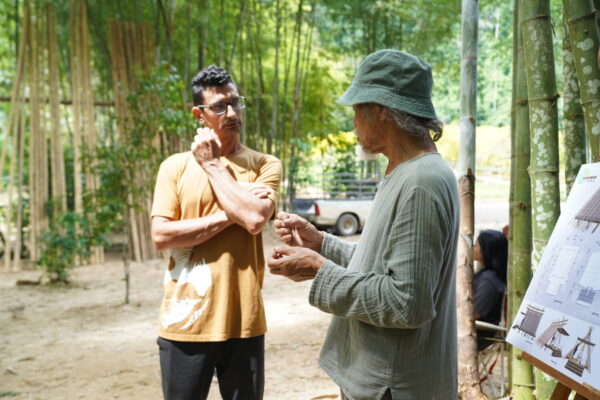

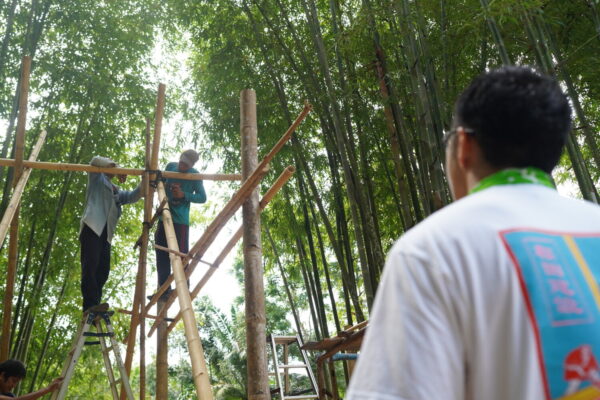
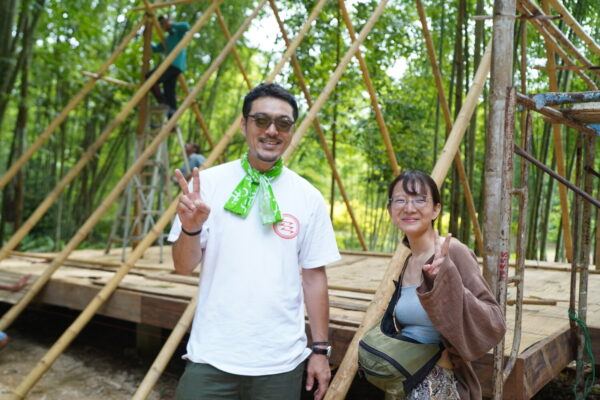



The Housing Workshop in Krabi, Thailand: Building Prefabricated Homes with Hempcrete and Bamboo
In light of these benefits, we are launching a housing workshop in Krabi, Thailand, to introduce the use of Hempcrete, combined with bamboo, to build prefabricated homes. The workshop will allow participants to explore the potential of Hempcrete as a building material and gain hands-on experience with prefabrication techniques.
Why Bamboo?
Bamboo is another rapidly renewable resource that perfectly complements Hempcrete in construction. Known for its strength, flexibility, and sustainability, bamboo has been used in Thai architecture for centuries. When combined with Hempcrete, bamboo offers additional structural support, making the homes both resilient and sustainable. This blend of materials will create houses that are in harmony with both nature and traditional Thai design, while also promoting modern sustainability standards.
Testing Air Quality in Hempcrete Homes
One of the main focuses of our housing workshop is to test the air quality inside Hempcrete homes. Concrete, while a common building material, absorbs water and creates a damp environment that can become moldy, especially in Thailand’s humid climate. We believe Hempcrete, with its breathability and moisture-regulating properties, offers the best solution to these problems. By testing air quality, we aim to demonstrate that Hempcrete homes provide a healthier living environment, free from the issues that arise in concrete structures.

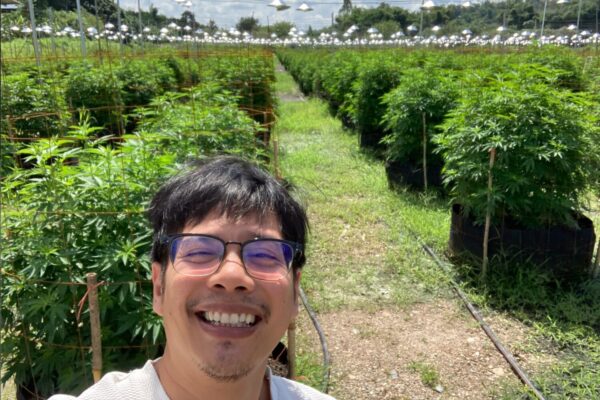

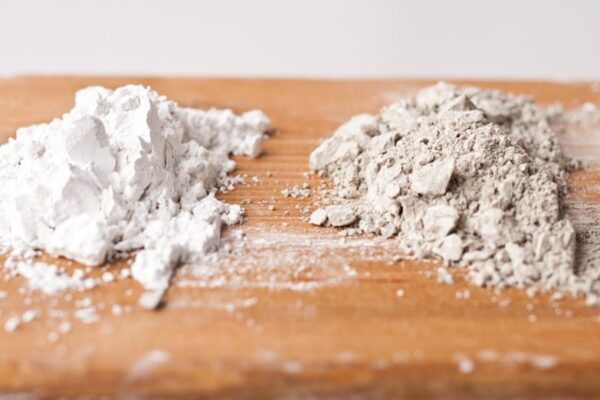


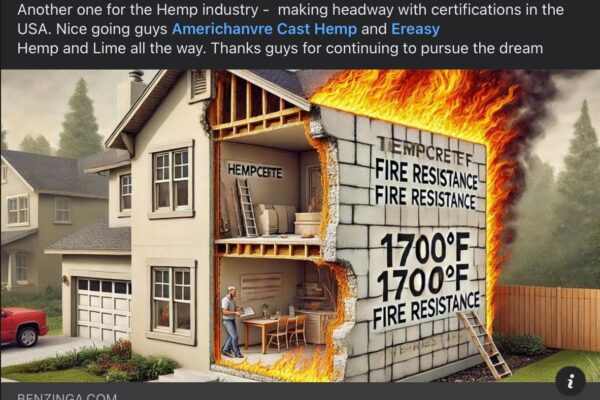
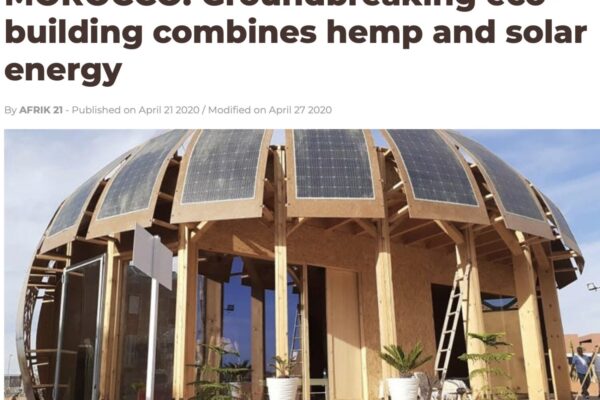
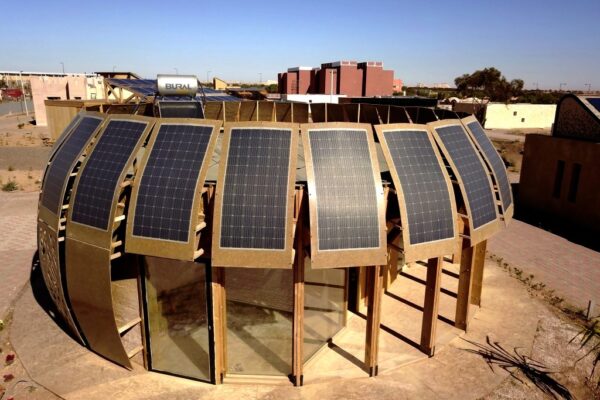
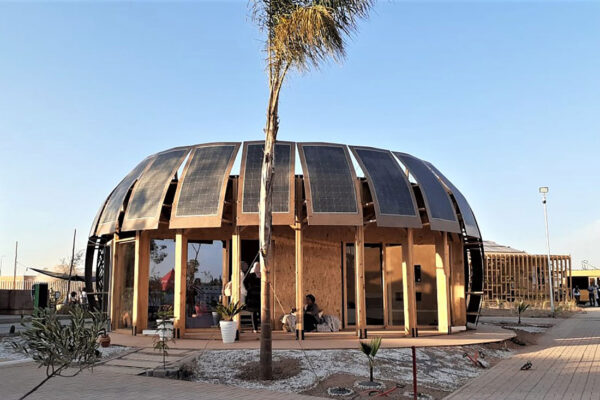


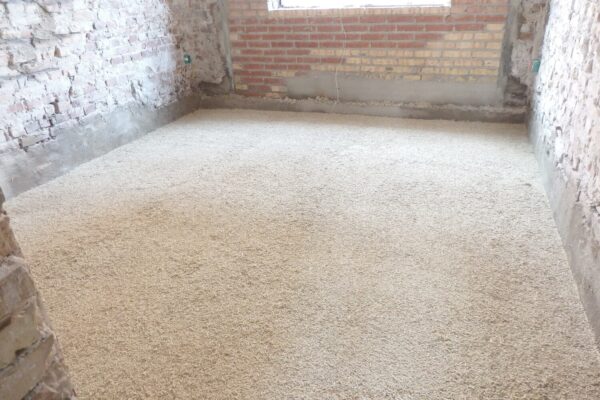
Why Thailand’s Cannabis Legalization Matters
The recent legalization of cannabis in Thailand has opened the door for hemp cultivation, allowing the country to explore the vast potential of this versatile plant. Hemp, which is derived from the cannabis plant, can now be grown legally, providing a local, sustainable source of material for building projects. This is a unique opportunity for Thailand to lead the way in sustainable construction by using Hempcrete to build homes that are environmentally friendly, affordable, and healthier for residents.
Join Us in Building the Future of Housing
Our housing workshop in Krabi will not only teach participants how to build with Hempcrete and bamboo but also explore the broader implications of sustainable living. By creating prefabricated homes with these materials, we aim to showcase a model of housing that is both eco-conscious and practical for modern living. The homes will be easy to assemble, energy-efficient, and designed to enhance air quality and overall health.
We invite architects, builders, sustainability enthusiasts, and anyone interested in the future of housing to join us in Krabi. Together, we can create homes that not only benefit humanity but also honor the natural world around us.

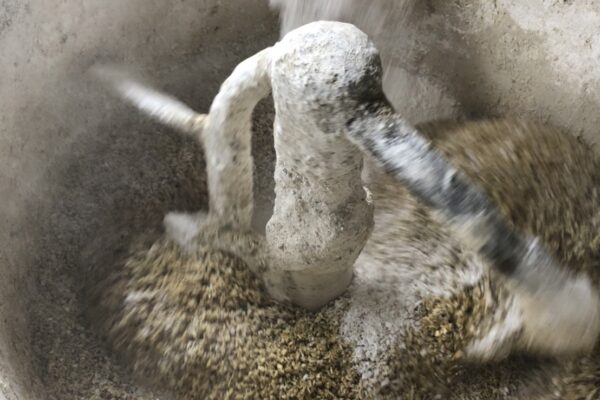

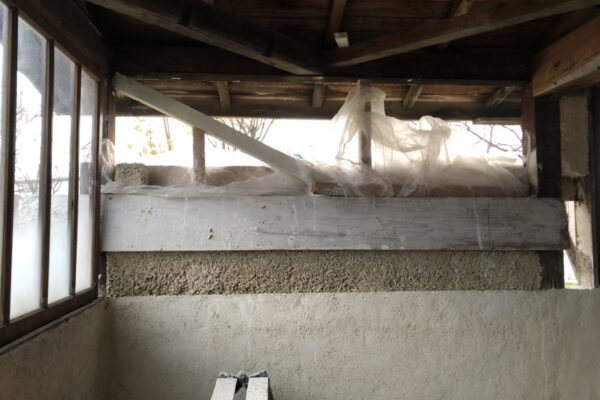









Hempcrete workshop for making wall and insulation in Akita, Japan
Hempcrete Performance
Hempcrete has several unique properties that make it an attractive material for sustainable construction:

1. Lightweight
Hempcrete is significantly lighter than traditional concrete due to the use of the hemp plant’s woody core, known as hurd. This lightweight nature makes it easier to handle during construction and reduces the load on foundations, allowing for more flexibility in building design.
2. Thermal Insulation
Hempcrete has excellent thermal insulating properties, helping to regulate indoor temperatures by keeping buildings cool in the summer and warm in the winter. Its insulation capability reduces the need for heating and cooling systems, making it energy-efficient and eco-friendly.
3. Breathability
One of Hempcrete’s most significant advantages is its breathability. It allows moisture to move in and out of the building envelope, which helps to prevent condensation, mold, and mildew. This creates healthier indoor environments, especially in humid climates.
4. Carbon Sequestration
Hempcrete is a carbon-negative material. The hemp plant absorbs carbon dioxide as it grows, and the carbon remains trapped within the material when used in construction. This means that Hempcrete buildings can help reduce overall carbon emissions, contributing to climate change mitigation.
5. Fire Resistance
Hempcrete is naturally fire-resistant due to its high silica content when mixed with lime. It can withstand high temperatures without releasing toxic fumes, making it a safer option for homes.
6. Durability
While not as strong as concrete in terms of load-bearing capacity, Hempcrete is highly durable and can last for decades. It is resistant to pests, decay, and weather conditions, especially when used for non-load-bearing walls.
7. Acoustic Insulation
Hempcrete also has excellent acoustic insulating properties. It absorbs sound, making it an ideal material for noise reduction in residential and commercial buildings.
8. Low Embodied Energy
Hempcrete has a low embodied energy, meaning that the energy required to produce and process it is minimal compared to traditional building materials like concrete. This makes it an environmentally friendly choice throughout its lifecycle—from production to disposal.
9. Flexibility in Construction
While not suitable for structural support, Hempcrete can be used in combination with other materials like timber or bamboo for structural purposes. It works well in prefabrication and is adaptable for various types of construction projects.
10. Non-Toxic and Chemical-Free
Hempcrete is made from natural, non-toxic materials. Unlike many modern construction materials, it does not release harmful volatile organic compounds (VOCs) into the air, contributing to healthier indoor air quality.
11. Pest-Free
Hempcrete is naturally resistant to pests, including termites, which can be a major issue in traditional wood or concrete structures, particularly in tropical climates. The combination of hemp and lime creates an environment that is inhospitable for insects and rodents, making it a long-lasting building material without the need for chemical treatments.
